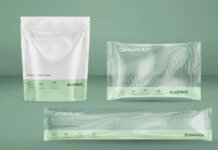
SIG, a leading solutions provider of sustainable packaging, has received approval for its group-wide net-zero science-based target from the Science Based Targets initiative (SBTi). The company has committed to reaching net-zero greenhouse gas (GHG) emissions across its value chain by 2050, the most ambitious commitment available through the SBTi process. Of the more than 2,000 companies globally with a public net-zero pledge, SIG is among the first 300 companies to have its target validated by the SBTi.
The company, headquartered in Switzerland, recently celebrated 170 years of operations. It has set a new series of near and long-term science-based emissions reduction targets with the SBTi, committing to reach net-zero, the point at which a balance is achieved between emissions produced and emissions taken from the atmosphere, by 2050. These targets are significantly more ambitious than the company’s previous GHG reduction targets, approved by the SBTi in 2018 and 2020. The move sees SIG look beyond its own operations and commit to the decarbonization of its full value chain in line with climate science.
SIG’s new near-term 2030 commitments (using 2020 as the baseline year) include:
- 42% absolute reduction of scope 1 and 2 GHG emissions
- 100% renewable electricity through 2030
- 51.6% reduction of scope 3 GHG emissions per liter packed
SIG’s new long-term 2050 targets include:
- 90% absolute reduction of scope 1 and 2 GHG emissions
- 97% reduction of scope 3 GHG emissions per liter packed
Samuel Sigrist, CEO, SIG said, “The approval of our net-zero pathway by the SBTi is a milestone achievement that showcases our dedication to decarbonizing our operations and value chain. Our new targets are considerably bolder than our previous GHG reduction targets and have been well received by our stakeholders. Decarbonizing our business will not be an easy task, but we’re excited to speed up our journey to net zero as one of the first 300 companies that have received SBTi approval.”
Angela Lu, president and general manager, Asia Pacific South, SIG comments, “SIG’s journey to becoming a net-positive business includes creating packaging “for better” that gives more to people and the planet than it takes out. We are committed to keep reducing our carbon footprint until we capture more carbon from the atmosphere than we emit while ensuring our sustainable innovations help customers get more food to consumers around the world in even more safe, sustainable, and affordable ways.”
Meeting the Paris Agreement goals and limiting global warming to 1.5°C requires net-zero carbon emissions globally by 2050. The SBTi’s rigid approval process helps ensure that SIG is using a robust, clear, and scientific framework to contribute to global efforts to mitigate climate change impacts.
The main ways SIG is reducing its operational emissions (scope 1 and 2) are its 100% renewable electricity commitment and outstanding on-site solar installation program, as well as exploring low carbon energy sources to lower direct emissions.
SIG’s Rayong plant in Thailand was the first of its kind in the region, when it installed a solar roof in 2018, covering an area of 17,664 sqm. This solar project with 12,350 panels can produce up to 5675 megawatt hours of electricity per year which in turn reduces (CO2) emissions by 12,871 tonnes since July 2018, equivalent to offsetting of CO2 by 280 to 415 trees or a forest area of 10,000 sqm.
SIG’s products play a major role in reducing emissions across the value chain (scope 3), due to the amount and types of raw materials used. Going forward, the company’s priorities are to use less aluminum foil in its aseptic carton packs, work with suppliers to reduce emissions across the supply chain, further improve energy efficiency with new filling lines, and increase collection and recycling of used packaging.











